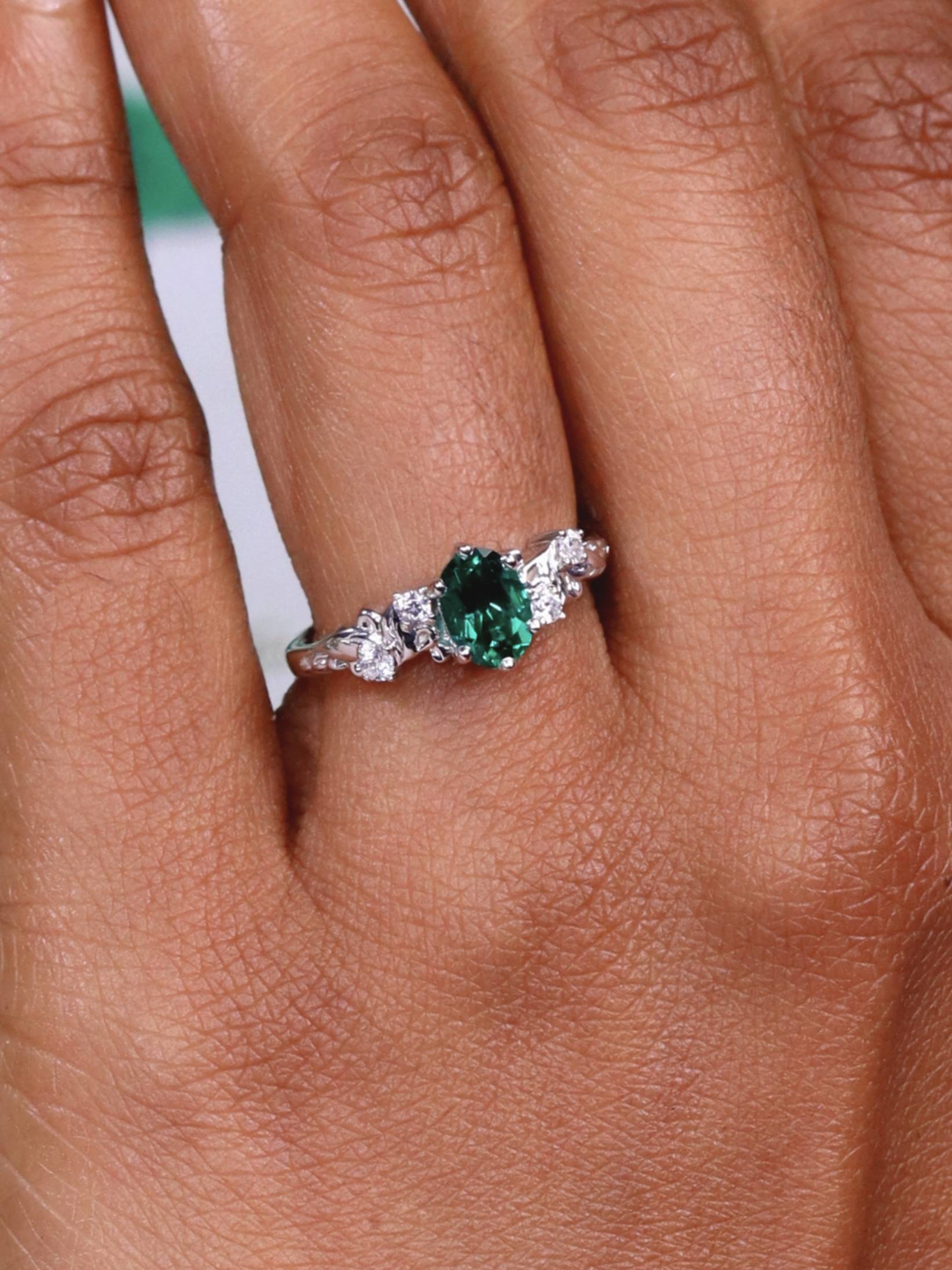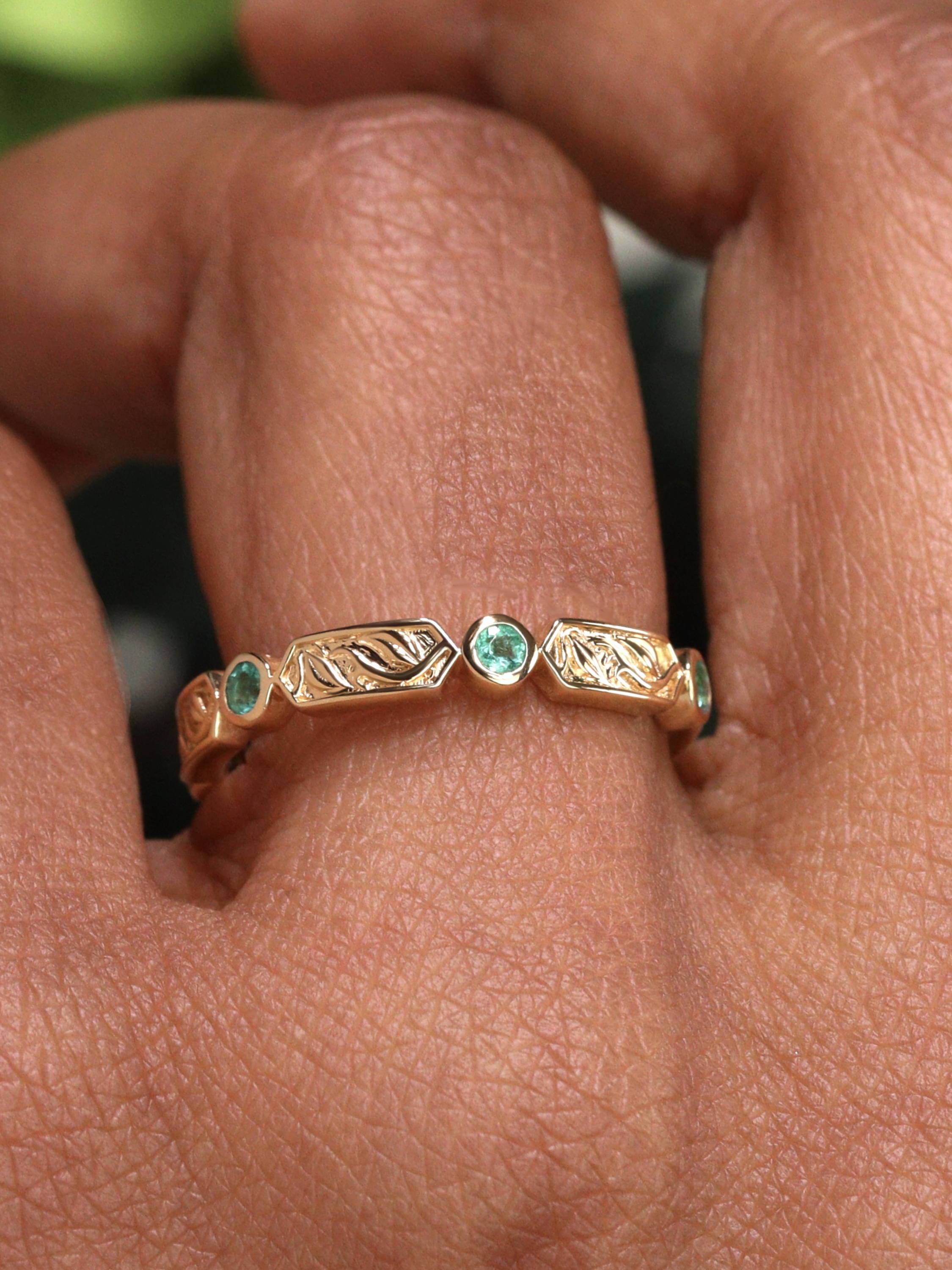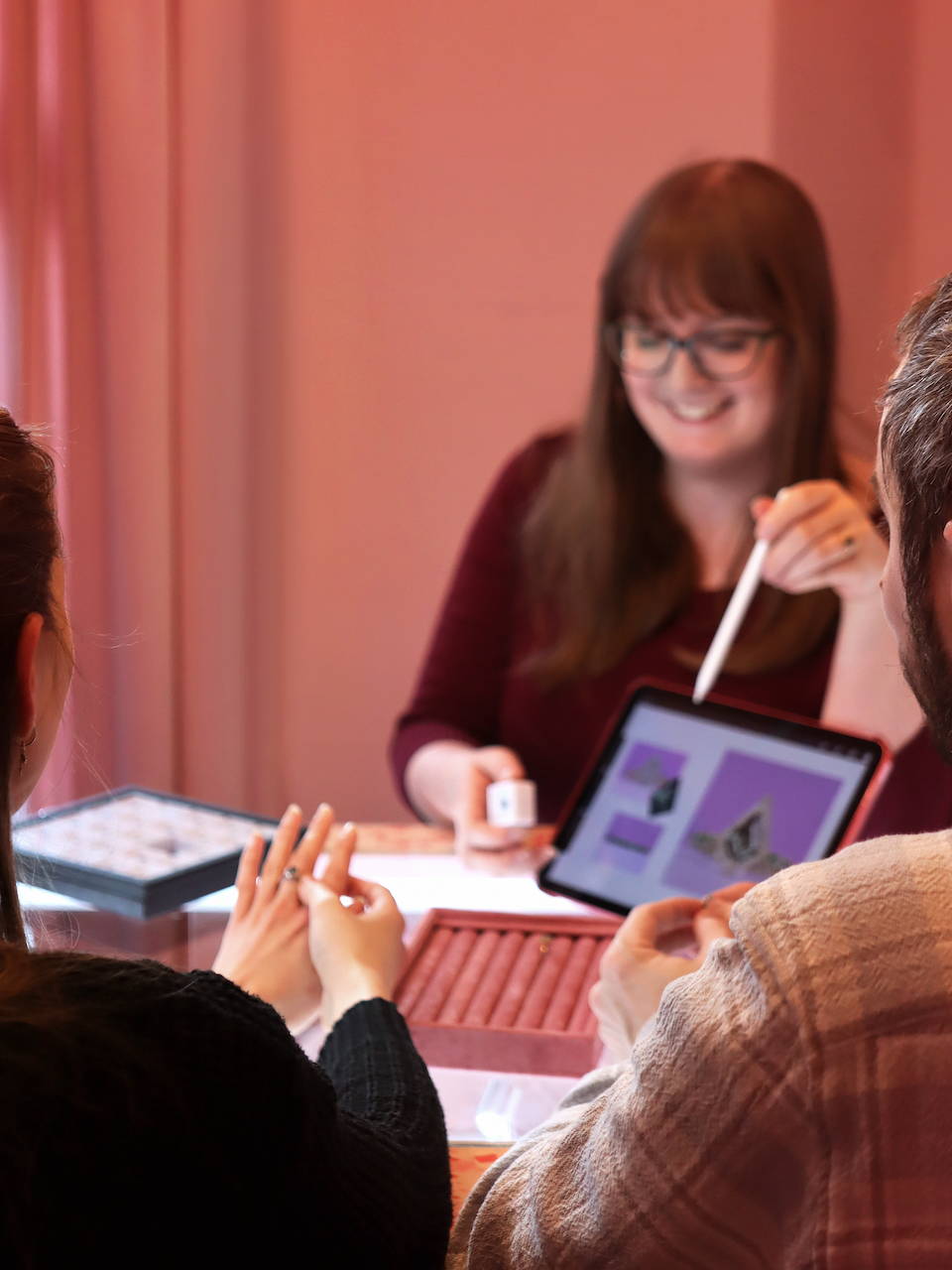GEMSTONE GUIDES
Emerald Gemstone Guide

Emeralds have had their hold on the gemstone world for as long as jewellery has existed, popping up across history to take the spotlight as the queen of green. They held particular sway in the 1920s, when emerald green acted as a pillar of the Art-Deco movement, and it's no surprise they’re maintaining their position as one of the most popular gemstones for fine jewellery and engagement rings.
What is an emerald?
An emerald is one of four precious gemstones, including sapphire, ruby and diamond, and the leader of the beryl family which also includes semi-precious stones morganite and aquamarine!
emerald meaning
Like most gemstones, emerald was once believed to have healing properties, specifically helping with memory and other ailments of the mind. Emeralds have also been associated with wit, valour and truth - with some people in the middle ages believing emeralds had the power to blind snakes!
Nowadays emeralds are mainly known as the birthstone of May and the traditional gift for the 55th wedding anniversary. Emerald is the birthstone for May supposedly because the green hues are a representation of the colours of spring! Jewellery with emeralds is also often used to represent young love, as it is believed that that stone was associated with the goddess Venus.
Some astrologers believe you should wear an emerald on your pinky finger for luck in wealth and fortune - but be careful if you choose to do this! Your little finger is the most exposed, and so you are most likely to knock any rings on this finger when you wear them. Emeralds can be brittle, so take extra care if you don’t want your emerald to shatter!
Shop emerald collection
If you're looking for a stunning piece of emerald jewellery that will hold its beauty for generations to come, take a look at our collection of engagement and wedding rings.

emerald value
Emeralds are one of the highest value gemstones around. And unless you want to go down the lab grown route, it’s best to be prepared to pay more than you would for most other stones. especially if you want a good quality, reasonably sized emerald. Average emerald prices per carat are available below.
It is always good to remember that going for a higher carat is not always the way to get the best stone. Prioritising clarity, size, and cut can assist with getting you the stone you have always wanted, and ensuring that its value will hold!

emerald hardness
Emerald gemstones are reasonably hard, scoring between 7.5 to 8 on the MOHS scale. But you do still need to be careful with your emerald!
Surface reaching inclusions are common in emeralds, which is the cause of their brittle nature. They may be hard but emeralds are not tough - so can’t really take being knocked about. Other, harder stones will also damage your emerald, so make sure you keep any emerald jewellery secure and separate from your other gems!
The Mohs scale of mineral hardness is a scale used to measure the scratch resistance of various minerals. It assigns a relative hardness value to minerals based on their ability to scratch or be scratched by other minerals. With 10 being the hardest (diamond).

Emerald rarity
Emeralds are among the rarest gemstones, and so their price can often reflect this. Even the smallest stones are hard to find, so finding an emerald of gem quality is significantly harder! Around 250,000 carats of emeralds are mined per year across the globe. This may seem like a lot, however if you remember some emeralds are three or four carats each, and compare it to the 130 million carats of diamond that is mined yearly, it puts their scarcity into perspective.
How are emeralds formed?
It’s all down to the cooking pot of nature. Where you find heat and pressure, you get gemstones! And then you have to add the special ingredient for the flavour of your choice. In the case of emeralds, they are made up of the mineral beryllium, but it takes quite a lot more than that to get us that shade of green we crave.
Touches of iron, chromium and vanadium are all needed to give us the emerald green of our dreams, and then you just have to wait a speedy 100,000 years for the gemstone itself to form.
Lab grown emeralds
The lab grown emerald is one of the many synthetic stones that is making itself heard at the moment. As it is both a cost effective and ethical alternative to its natural sibling, many jewellers are choosing to use the synthetic stone over the earth grown emerald.
Synthetic emeralds also have one more advantage over lab grown emeralds, their lack of inclusions! Surface reaching inclusions are common in natural emeralds, and is the cause of their brittle nature. This can also cause issues further down the line when it comes to maintaining your stone (emerald care instructions to come).
With emeralds, it is likely a gemologist will be able to tell the difference between a lab grown and natural emerald. Unlike in diamonds, where there is no discernible difference between the lab grown and natural stone, the way that emeralds form leaves clues for any scientist with a microscope big enough!
Where do emeralds come from?
The majority of natural emeralds on the market are mined in Columbia. Although the earliest record of emeralds being mined was in ancient Egypt, around 300 BC!
Other sources of emeralds include Zambia, Australia, India and even the USA. Although not all sites where emeralds are found become mines. Commercially, some of these pockets of gemstones are simply too small.
emerald Ring inspiration
Emerald colours
There is really only one colour that comes to mind when you see ‘emerald’. And that's the deep saturated green that we all know and love. But emeralds can actually be a variety of green tones! There’s a whole spectrum of emerald available, with higher amounts of yellow and blue tones altering the overall look of your emerald.
These colours will also be affected by how opaque each emerald is. While inclusions are generally thought of as a negative aspect of a gem, like in rubies, inclusions are a hallmark of a natural emerald.
These inclusions may lighten the colour of an emerald, as they can sometimes make parts of the stone look whiter! If the colour of the stone becomes too light, it loses its emerald status, and is demoted to green beryl’.

Caring for your emerald
Don’t put your emerald in an ultrasonic cleaner. Emeralds are usually treated with a process called oiling. This is exactly how it sounds, where inclusions in the gem that reach the surface will be filled with oil (usually cedar oil). This improves the clarity, and helps to structurally support the stone. If an oiled stone is put into an ultrasonic cleaner this can lead to the stone shattering!
Do clean your emerald jewellery gently, by hand. It is not safe to leave your emerald soaking in water, but you can use a damp cloth and warm soapy water to gently clean your emerald. Pat it dry with a lint-free cloth, and you’re done!
Do get your emerald treated every 10-20 years. Almost every natural emerald will have been treated with oil. However, unlike other standard practices like heat treating, oiling is not permanent. To maintain the lustre of your emerald it will need to be re-oiled every 10-20 years. Synthetic emeralds do not need oiling, as they are unlikely to have been grown with a surface-reaching inclusion.
Don’t wear your stone while cleaning. Especially if your emerald is set in a ring, you need to be wary of cleaning products and cosmetics. Coming into contact with bleach is one of the worst things for your stone! So pop your jewellery back in its box while you tackle the house.
Do avoid extreme temperatures. Very high and very low temperatures can cause your stone to crack, so don’t leave it next to the radiator, and be careful if you live somewhere with extreme cold!
Don’t wear your emerald jewellery during sports. This should be a no-go with any jewellery, as it can be dangerous for both you and your gemstone. You should avoid any kind of overly physical activity to avoid potential knocks, claws catching or breaking, dents and stone losses! This includes swimming - as chlorine and salt water can be especially harsh for your emerald!
If you think your jewellery needs a refresh by a professional, book in for our repair and refresh service!
In the Jessica Flinn Showroom
At Jessica Flinn, we pride ourselves on creating a friendly atmosphere where all are welcome. If you book an in person appointment with us you will be welcomed into our beautiful showroom with a beverage of your choice, whether its a cup of coffee or a glass of champagne, we're here to make your appointment as memorable as possible. One of our experts will then guide you through the ring choosing or designing journey and make sure you leave with a ring you absolutely adore!
Book an appointment today and start your journey.







